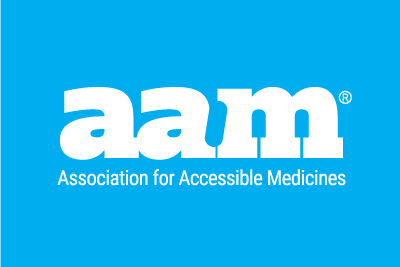The biosimilars industry is proving that market competition works to drive down drug costs and increase patient access to medicines. According to recent data from IQVIA, savings from biosimilars increased over 800% from 2018 to 2020, from under $900M in 2018 to $7.9B in 20201. These savings are projected to reach over $30B annually by 2022, and collectively will save the U.S. health care system $133B from 2021 to 20252. This is the result of new biosimilar launches and robust competition under which multiple biosimilar drug manufacturers win market share based on lower prices.
This progress is also the result of new regulatory approvals that create the opportunity for biosimilars to compete in a manner similar to generic drugs. Just in the past six months, the FDA has approved the first interchangeable biosimilar products, including Semglee, the first interchangeable biologic insulin, and Cyltezo, an interchangeable biologic for Humira, the top-selling drug in the United States.
Biosimilars are complex products that can require 8 to 10 years to materialize, at a cost of $100 to $250M3. After years of high-risk investment, the biosimilar industry is poised to deliver tremendous savings to the U.S. health care system, improving access for patients and lowering prescription drug costs. However, the negotiation framework in the Build Back Better Act (H.R. 5376) threatens this progress and could undermine biosimilar competition, resulting in fewer options for care and higher costs for patients.
Under the proposal, the Department of Health and Human Services (HHS) would have the authority to negotiate prices with manufacturers for 100 drugs or more by 2030, many of them reference biologics that could be subject to biosimilar competition. The Congressional Budget Office estimates the proposal would save the federal government approximately $13 to $15B per year from 2028 to 2031.
So how does the CBO savings estimate compare to straight-up biosimilars competition? Poorly.
Savings from Biosimilar Competition Benefits All Patients, Not Limited to Medicare
In fact, gold-standard drug data firm IQVIA estimates biosimilars will deliver over $30B per year in savings to the US healthcare system by 2022. That is greater savings for patients than the Build Back Better proposal and it starts right now. And as more biosimilars and interchangeable biologics become available, there is the potential for much larger savings as providers and payers take advantage of the opportunities to improve access and reduce costs for patients with these products.
Unfortunately, the current version of the Build Back Better Act puts these savings in jeopardy. The aggressive use of non-innovative patents by brand-name pharmaceutical companies can delay entry for some biosimilars past the point of the negotiation window. But rather than addressing the abuse of patents, the Build Back Better framework instead imposes price controls that may have the unintended consequent of perversely benefitting the brand-name drug. The cumulative result is that the uncertainty associated with developing and bringing a biosimilar to market would skyrocket and the potential market opportunity for lower cost competitors would be cut by at least 60%. At the time biosimilar makers decide on whether to commit to a $100-$250 million investment, they will not know whether a reference product will be selected for negotiation or what the negotiated price might be. This means that the Build Back Better Act’s negotiation framework threatens the future of an industry that is only now gaining a strong foothold and has already demonstrated its promise by helping cut by 50% the spending growth rate in oncology treatments.
Congress created the pathway for biosimilars with enactment of the Biologics Price Competition and Innovation Act (BPCIA) in 2010, and now biosimilars are beginning to deliver on their promise. The Build Back Better’s negotiation framework represents a significant policy change and a step backwards that harms patient access to lower-cost medicines and creates a perverse outcome that enhances brand drug market share. By discouraging biosimilar competition and rewarding more brand patent gamesmanship, the proposal will leave savings on the table, and result in higher costs for patients, taxpayers and employers.
Share Your Voice
Tell Congress to protect access to your safe, affordable generic and biosimilar medicines.
By Craig Burton, AAM Vice President, Policy
Published on December 3, 2021
References
- IQVIA, National Sales Perspectives, Dec 2020. (Link)
- IQVIA, The Use of Medicines in the U.S.: Spending and Usage Trends and Outlook to 2025, May 2021. (Link)
- Blackstone EA, Joseph PF. The Economics of Biosimilars. Am Health Drug Benefits. 2013;6(8):469-478. (Link)




